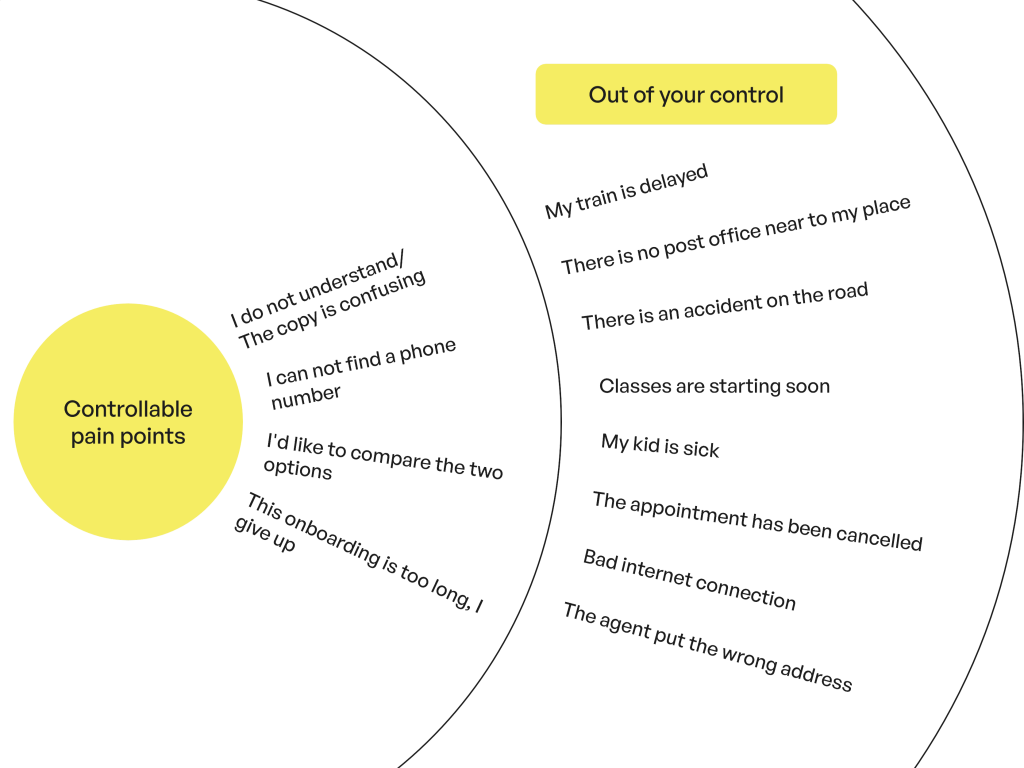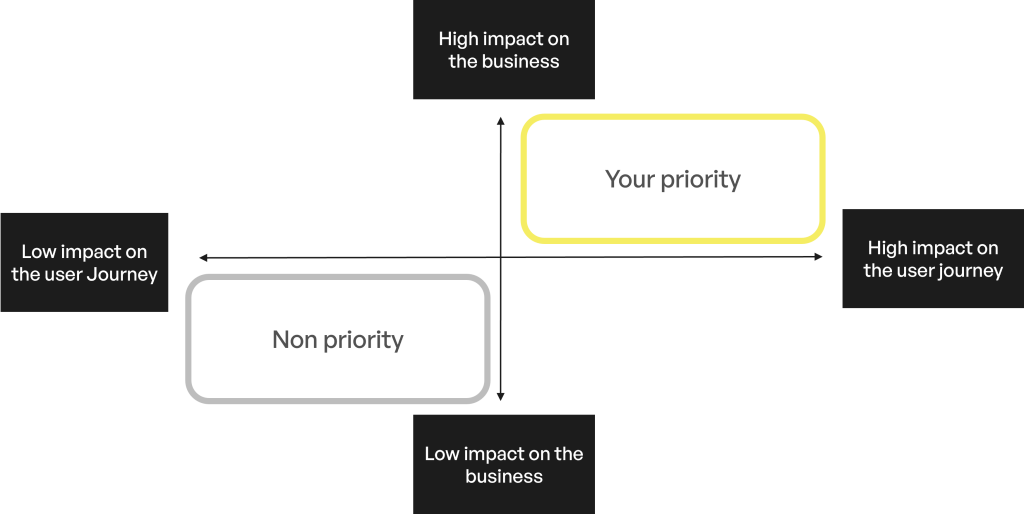When was the last time you felt truly wowed by a product or service? Perhaps it was an app that recognized you seamlessly across multiple devices, or an online store that offered a free upgrade with your order. For a moment, it seemed almost magical. But fast-forward a year, and you might suddenly find yourself frustrated when another retailer doesn’t offer the same perk.
This quick leap – from “delighted” to “I expect this” – lies at the heart of an essential tension in user experience (UX) design: How do we keep raising the bar for customers without exhausting our resources on features that quickly become baseline requirements?
To explore this question, we’ll take a journey through how user experience mapping sheds light on where “delighters” are truly valuable, and where you need to meet baseline expectations first. We’ll also see why it’s not enough to simply identify these features: the real magic comes from translating these insights into tangible, future-proof improvements.
Why Map the User’s Journey in the First Place?
A user journey map is a visual representation of all the steps a person takes to achieve a specific goal-whether it’s returning a package, buying a high-ticket item like a Tesla, or simply resetting a forgotten password. While it may seem simple, a closer look reveals layers of complexity:
Multiple channels and touchpoints
The user may be browsing on a laptop, completing the transaction on a smartphone, or getting help from a chatbot. Each interaction is a chance to delight – or frustrate – them.
Pain points vs. risks
A pain point is directly related to your product or process-something you can fix. An example is an unclear “return” link buried on the product page. Risks are factors beyond your complete control, such as the post office losing a package. You can’t eliminate the possibility, but you can prepare for it (e.g., by clearly communicating insurance or offering a backup solution).

Both can derail the user’s path, but you can only really fix pain points. Risks can be mitigated or anticipated, but never completely eliminated.
Shifting emotions
User journey maps also highlight moments of truth: those critical junctures where a user can either become a loyal fan or abandon your service altogether. According to the Peak-End Rule, which refers to a cognitive bias that affects how people remember past events, a delightful (or painful) peak can shape how the user remembers the entire journey.
The Kano Model: Defining the “Wow” Factor—and Beyond
To decide which parts of the journey deserve the most investment, many designers and product teams turn to the Kano Model, an approach to prioritizing features on a product roadmap based on the degree to which they are likely to satisfy customers. It categorizes features and experiences into three main types:
- Basic Expectations
These are the must-haves that users take for granted-like a secure checkout or the ability to track an order. Their absence creates deep dissatisfaction, but their presence merely puts you in a “neutral” state. - Satisfiers
These are the features that users actively want and will notice if they’re missing like easy returns, flexible payment options, or personalized recommendations. The presence of satisfiers can move user acceptance from “meh” to “this is good. - Delighters
Here are your surprises that create real excitement: a free shipping upgrade, a personalized note, or a courtesy call to make sure everything is set up correctly. While delighters can create memorable “moments of glory,” they often become the baseline over time as competitors adopt them.
Evolving Expectations: A Moving Target
Yesterday’s innovation can become tomorrow’s cost of entry. This phenomenon happens across industries-from backup cameras in cars, once considered a flashy novelty, to same-day shipping, once an amazing perk but now increasingly standard. In a user journey map, you can see these transitions in real time: an experience that once wowed users is slowly losing its “wow” factor as it becomes mainstream.
How do you stay ahead?
Iterate and update
A journey map isn’t a one-and-done artifact. By revisiting it and overlaying new user data, you can see which features have slipped from “wow” to “basic.
Combine qualitative and quantitative insights
Combine quantitative metrics (conversion rates, drop-off points, time on page) with qualitative insights (user interviews, support tickets, open-ended feedback). This dual perspective reveals not only where users are struggling, but why.
Consideration of influencing factors
Personas, empathy maps, and user interviews help you understand how cognitive, emotional, or behavioral elements can amplify a pain point. For example, waiting five days for a replacement card might seem insignificant – unless your user is about to leave the country for a family vacation. Suddenly, that small delay becomes a deal-breaker.
Evaluate the impact on business goals
If a particular feature is no longer exciting, reevaluate whether it’s still worth the investment. Maybe that budget can fund a new initiative that really stands out, or fix a high-impact pain point that’s frustrating your core user base.

Connecting Kano Insights to Real Change
It’s one thing to identify what’s basic, what’s satisfying, and what’s delightful. But how do you fix the underwhelming steps or build on the truly positive ones?
- Align stakeholders
Bringing together product owners, system engineers, marketers, and customer support staff in a single session fosters a shared vision of where the real pain points and “wow” opportunities lie. This conversation also clarifies the scope: What steps in the user journey do we actually control? Where do we need to coordinate with partners or other departments?
- Prototype quickly
Once you’ve identified a specific hurdle-say, an awkward sign-up flow for new users-you can test a revised design in a small pilot. Rapid design sprints or co-creation workshops help verify that the new solution actually solves the problem. Don’t just guess-validate.
- Zoom in or out
If the problem is hyper-specific (like a single button that causes friction), you can use a user flow to focus on that one channel. If the challenge involves front- and back-end coordination (like returning a package and then processing a refund in your internal system), you might use a service blueprint to capture how multiple departments coordinate behind the scenes. Each mapping method user journey, user flow, or blueprint serves a slightly different purpose, and choosing the right one can be critical to solving the right problem.
A brief illustrative example
Imagine a premium electronics retailer that offers same-day shipping as a special perk. Initially, customers are thrilled; this is the delight factor that sets the brand apart. A year later, several competitors do the same. Consumers now see same-day shipping as part of the basic offering for high-end products. The retailer’s competitive advantage fades.
As they revisit their journey map, they see a moment of pain: confusion about scheduling a delivery time. They also see an opportunity to add new delight, perhaps personalized troubleshooting for complex products or white-glove in-home installation with real-time support. Testing these ideas through rapid prototyping or collaborative workshops could validate the next generation of delighters that keep the brand ahead of user expectations.
Final thoughts: Beyond Mapping, Toward Growth
Balancing delight with baseline expectations is a clear-eyed way to allocate resources wisely, strengthen brand loyalty, and keep your digital product relevant. A user journey map is your compass: it pinpoints where these improvements belong, lets you see which frustrations need urgent attention, and highlights places ripe for surprising the user.
But don’t stop at drawing arrows and boxes. Success depends on:
- Engaging the right stakeholders,
- Validating ideas through prototypes or small pilots,
- Iterating regularly to keep pace with customer needs.
Done well, journey mapping, enriched by the Kano model, transforms from a simple diagram into a roadmap for growth, turning empathy into innovation. And ultimately, that’s how you’ll continue to delight your users as the bar continues to rise – by ensuring that you don’t just react to evolving expectations, but anticipate them.
If your organization is ready to align teams, address pain points, and deliver those coveted “wow” moments, you’re on the right track. The next step is to adopt a structured approach – whether it’s cross-functional workshops, design sprints, or iterative feedback loops – that keeps real users at the center of every decision. Because while features may come and go, one thing never changes: giving people a memorable, frictionless experience is always worth the investment.
Want to create truly user-centric digital products? We’ll guide you through structured design thinking sessions to generate tangible, actionable solutions. Let’s talk about it!